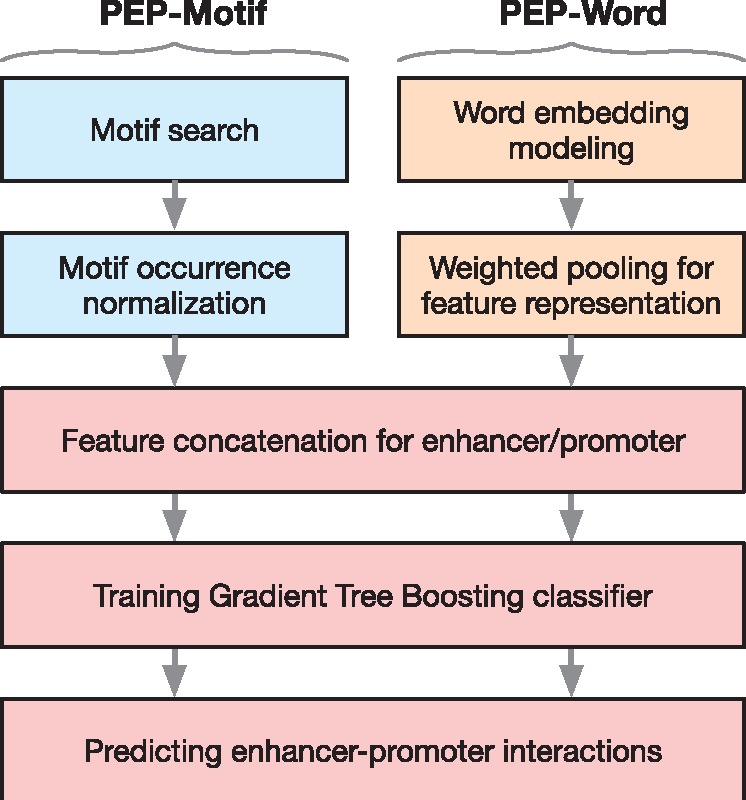Exploiting sequence-based features for predicting enhancer-promoter interactions
Yang Yang, Ruochi Zhang, Shashank Singh, Jian Ma.
Published in ISMB 2017, Bioinformatics
Abstract
Motivation
A large number of distal enhancers and proximal promoters form enhancer-promoter interactions to regulate target genes in the human genome. Although recent high-throughput genome-wide mapping approaches have allowed us to more comprehensively recognize potential enhancer-promoter interactions, it is still largely unknown whether sequence-based features alone are sufficient to predict such interactions.
Results
Here, we develop a new computational method (named PEP) to predict enhancer-promoter interactions based on sequence-based features only, when the locations of putative enhancers and promoters in a particular cell type are given. The two modules in PEP (PEP-Motif and PEP-Word) use different but complementary feature extraction strategies to exploit sequence-based information. The results across six different cell types demonstrate that our method is effective in predicting enhancer-promoter interactions as compared to the state-of-the-art methods that use functional genomic signals. Our work demonstrates that sequence-based features alone can reliably predict enhancer-promoter interactions genome-wide, which could potentially facilitate the discovery of important sequence determinants for long-range gene regulation.

